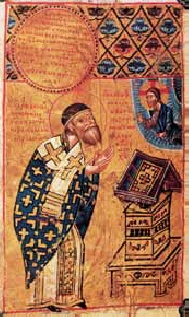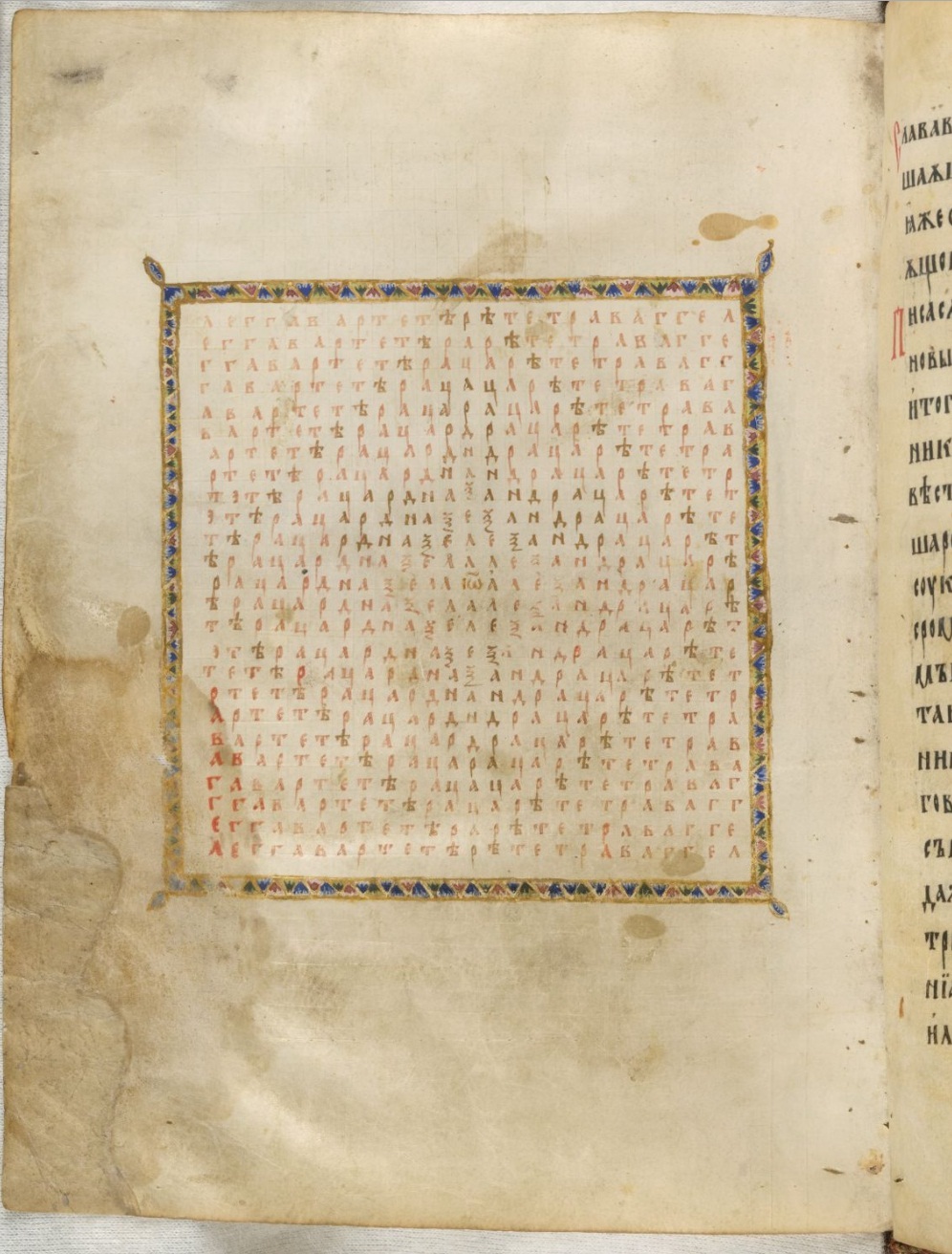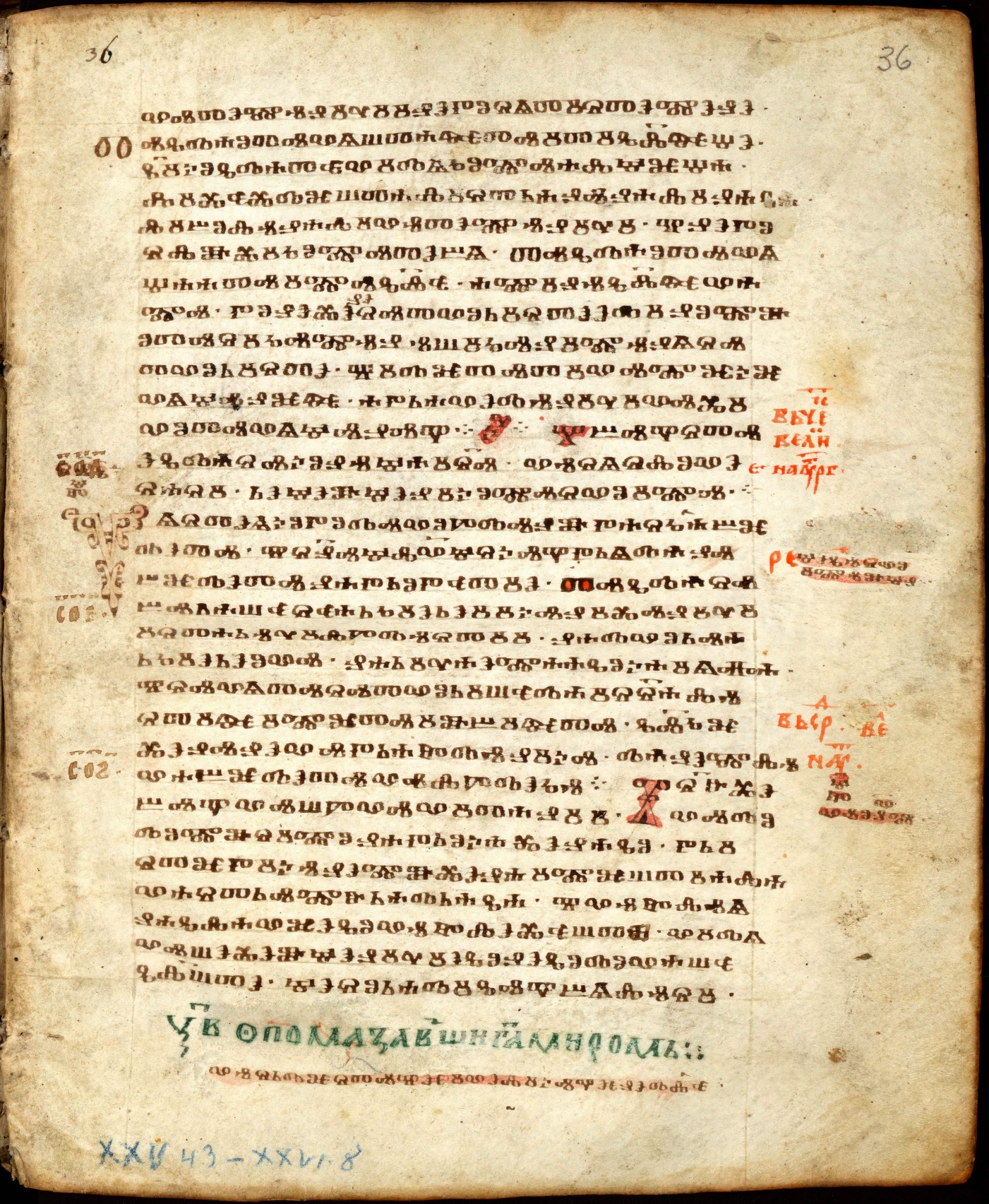|
Tetraevangelion
''Tetraevangelion'' ( el, τετραευαγγέλιον, "Four Evangelia/Gospel Books"; ka, ოთხთავი, ''ot'kht'avi''; Old Slavonic: благовѣствованиѥ; bg, Четвероевангелие; sr, Четворојеванђеље) is a name used in Eastern Orthodox terminology for the Canonical gospels of the Four Evangelists. Examples of notable medieval manuscripts include: *Gospels of Tsar Ivan Alexander (1355–56), Bulgarian, illuminated. *Jakov of Serres' (1354), Serbian, illuminated. * Vani Gospels (12–13th c.), Georgian, illuminated. *Mstislav Gospel (12th c.), Russian, illuminated. *Codex Marianus (11th c.), South Slavic. One of the oldest Slavic ''tetraevangelia''. *Codex Zographensis The ''Codex Zographensis'' (or ''Tetraevangelium Zographense''; scholarly abbreviation ''Zo'') is an illuminated Old Church Slavonic canon manuscript. It is composed of 304 parchment folios; the first 288 are written in Glagolitic containing Gospe ... (10–11t ... [...More Info...] [...Related Items...] OR: [Wikipedia] [Google] [Baidu] |
Jakov Of Serres
Jakov of Serres ( sr, Јаков Серски; 1300–1365) was a medieval Serbian writer, scholar, translator, and hierarch of the Serbian Orthodox Church, one of the most important men of letters working in the 14th century. Biography Evidence about his life is scarce, but his literary legacy suggests an excellent knowledge of Greek and Slavic languages. In 1343, King (and eventually Emperor) Stefan Dušan began to build the Monastery of the Holy Archangels near Prizren; he appointed Jakov, a learned and highly esteemed monk, its first ''hegumen'' (abbot). Both Stefan Dušan and his wife Jelena were in awe of Jakov's wide knowledge and they often sought his company and counsel. In 1345, Stefan Dušan captured the city of Serres from the Byzantine Empire; and Jakov was appointed Metropolitan of Serres and its surrounding territories. The population of Serres was mixed Slavic, Albanian and Greek and Jakov was fluent in all three languages and their dialects. In fact, Jakov wrote so ... [...More Info...] [...Related Items...] OR: [Wikipedia] [Google] [Baidu] |
Vani Gospels
The Vani Gospels (Vani Four Gospels; ka, ვანის ოთხთავი, ) is an illuminated manuscript of the Four Gospels in the Georgian ''nuskhuri'' script dating from the end of the 12th–early 13th centuries. The manuscript was composed at the queen Tamar of Georgia's request by the Georgian monk John the Unworthy at the Rhomana Monastery at Constantinople. It was later brought to Georgia and kept first at the Shorata Monastery (Meskheti), then in Vani (Imereti; hence comes its name) and eventually at the Gelati Monastery at Kutaisi. The manuscript consists of 274 folios each of 29X21 cm in size and is abundantly illuminated. It is now at the Georgian National Center of Manuscripts in Tbilisi Tbilisi ( ; ka, თბილისი ), in some languages still known by its pre-1936 name Tiflis ( ), is the Capital city, capital and the List of cities and towns in Georgia (country), largest city of Georgia (country), Georgia, lying on the ..., Georgia (A-1335). Exte ... [...More Info...] [...Related Items...] OR: [Wikipedia] [Google] [Baidu] |
Gospel Book
A Gospel Book, Evangelion, or Book of the Gospels (Greek: , ''Evangélion'') is a codex or bound volume containing one or more of the four Gospels of the Christian New Testament – normally all four – centering on the life of Jesus of Nazareth and the roots of the Christian faith. The term is also used for a liturgical book, also called the Evangeliary, from which are read the portions of the Gospels used in the Mass and other services, arranged according to the order of the liturgical calendar. Liturgical use in churches of a distinct Gospel book remains normal, often compulsory, in Eastern Christianity, and very common in Roman Catholicism and some parts of Anglicanism and Lutheranism. Other Protestant churches normally just use a complete Bible. History In the Middle Ages, the production of copies of the Bible in its entirety was rare because of the huge expense of the parchment required. Individual books or collections of books were produced for specific purposes. ... [...More Info...] [...Related Items...] OR: [Wikipedia] [Google] [Baidu] |
Gospel
Gospel originally meant the Christian message ("the gospel"), but in the 2nd century it came to be used also for the books in which the message was set out. In this sense a gospel can be defined as a loose-knit, episodic narrative of the words and deeds of Jesus, culminating in his trial and death and concluding with various reports of his post-resurrection appearances. Modern scholars are cautious of relying on the gospels uncritically, but nevertheless, they provide a good idea of the public career of Jesus, and critical study can attempt to distinguish the original ideas of Jesus from those of the later authors. The four canonical gospels were probably written between AD 66 and 110. All four were anonymous (with the modern names added in the 2nd century), almost certainly none were by eyewitnesses, and all are the end-products of long oral and written transmission. Mark was the first to be written, using a variety of sources. The authors of Matthew and Luke both independently ... [...More Info...] [...Related Items...] OR: [Wikipedia] [Google] [Baidu] |
Gospels Of Tsar Ivan Alexander
The Gospels of Tsar Ivan Alexander, Tetraevangelia of Ivan Alexander, or Four Gospels of Ivan Alexander ( bg, Четвероевангелие на (цар) Иван Александър, transliterated as ''Chetveroevangelie na (tsar) Ivan Aleksandar'') is an illuminated manuscript Gospel Book, written and illustrated in 1355–1356 for Tsar Ivan Alexander of the Second Bulgarian Empire. The manuscript is regarded as one of the most important manuscripts of medieval Bulgarian culture, and has been described as "the most celebrated work of art produced in Bulgaria before it fell to the Turks in 1393". The manuscript, now in the British Library (Add. MS 39627), contains the text of the Four Gospels illustrated with 366 miniatures and consists of 286 parchment folios, 33 by 24.3 cm in size, later paginated with pencil. The language of the text is variously described as Bulgarian, Middle Bulgarian, Slavonic, and Church Slavonic. Contents and binding The book contains the four Gos ... [...More Info...] [...Related Items...] OR: [Wikipedia] [Google] [Baidu] |
Mstislav Gospel
Mstislav Gospel is a 12th-century manuscript of the four Gospels on parchment in Old Church Slavonic. It is kept in the State Historical Museum in Moscow. The manuscript contains the text of the four Gospels on 213 parchment leaves (35.3 by 28.6 cm). Its miniatures, headpieces, and illuminated initials are in several colors and contain copious amounts of gold. The book was commissioned by Mstislav the Great and written by scribe Alexa for one of the churches in Novgorod In 1551, Ivan the Terrible commissioned a treasure binding which incorporates 13 Byzantine miniatures from the 10th century, 5 miniatures from the 11th century and 6 Russian miniatures from the 12th century. After the Massacre of Novgorod, like other ancient treasures of Novgorod, the book was brought to the Moscow Kremlin, where it was placed in the Cathedral of the Archangel The Cathedral of the Archangel (russian: Архангельский собор, Arkhangel'skiy sobor) is a Russian Orthodox churc ... [...More Info...] [...Related Items...] OR: [Wikipedia] [Google] [Baidu] |
Codex Marianus
The ''Codex Marianus'' is an Old Church Slavonic fourfold Gospel Book written in Glagolitic script, dated to the beginning of the 11th century, which is (along with Codex Zographensis), one of the oldest manuscript witnesses to the Old Church Slavonic language, one of the two fourfold gospels being part of the Old Church Slavonic canon. History Most of the Codex (172 folios, 171 according to some sources) was discovered by Victor Grigorovich at Mount Athos during a journey to the Balkans in 1844-45, in a hermitage belonging to the "Monastery of the Holy Mother of God" (the Blessed Theotokos), and thus the manuscript was named ''Codex Marianus'' in Latin. Grigorovich took the found folios to Kazan', and after his death in 1876 the Codex was transferred to Russian State Library in Moscow where it carries the catalog number грнг 6 (M.1689). Croatian diplomat and amateur scholar Antun Mihanović acquired 2 folios (containing Matthew 5.23 - 6.16) some time before Grigorovich made ... [...More Info...] [...Related Items...] OR: [Wikipedia] [Google] [Baidu] |
Codex Zographensis
The ''Codex Zographensis'' (or ''Tetraevangelium Zographense''; scholarly abbreviation ''Zo'') is an illuminated Old Church Slavonic canon manuscript. It is composed of 304 parchment folios; the first 288 are written in Glagolitic containing Gospels and organised as Tetraevangelium (Matthew, Mark, Luke, and John), and the rest written in Cyrillic containing a 13th-century synaxarium. It is dated back to the end of the 10th or beginning of the 11th century. Discovery and publishing The manuscript originally belonged to the Bulgarian Zograf Monastery on Mount Athos. It is said that it was kept at a conventual church near Ierisso and later transferred to the monastery's library. In 1843, the Croatian writer and Habsburgian diplomat Antun Mihanović discovered the manuscript during his stay at the monastery. The codex's importance was announced by the Russian historian and folklorist Victor Grigorovich who visited the monastery one year later and who is regarded as the founder of S ... [...More Info...] [...Related Items...] OR: [Wikipedia] [Google] [Baidu] |
Eastern Orthodoxy
Eastern Orthodoxy, also known as Eastern Orthodox Christianity, is one of the three main Branches of Christianity, branches of Chalcedonian Christianity, alongside Catholic Church, Catholicism and Protestantism. Like the Pentarchy of the first millennium, the mainstream (or "Canon law of the Eastern Orthodox Church, canonical") Eastern Orthodox Church is Organization of the Eastern Orthodox Church, organised into autocephalous churches independent from each other. In the 21st century, the Organization of the Eastern Orthodox Church#Autocephalous Eastern Orthodox churches, number of mainstream autocephalous churches is seventeen; there also exist Organization of the Eastern Orthodox Church#Unrecognised churches, autocephalous churches unrecognized by those mainstream ones. Autocephalous churches choose their own Primate (bishop), primate. Autocephalous churches can have Ecclesiastical jurisdiction, jurisdiction (authority) over other churches, some of which have the status of "Auto ... [...More Info...] [...Related Items...] OR: [Wikipedia] [Google] [Baidu] |
Canonical Gospels
Gospel originally meant the Christian message ("the gospel"), but in the 2nd century it came to be used also for the books in which the message was set out. In this sense a gospel can be defined as a loose-knit, episodic narrative of the words and deeds of Jesus, culminating in his trial and death and concluding with various reports of his post-resurrection appearances. Modern scholars are cautious of relying on the gospels uncritically, but nevertheless, they provide a good idea of the public career of Jesus, and critical study can attempt to distinguish the original ideas of Jesus from those of the later authors. The four canonical gospels were probably written between AD 66 and 110. All four were anonymous (with the modern names added in the 2nd century), almost certainly none were by eyewitnesses, and all are the end-products of long oral and written transmission. Mark was the first to be written, using a variety of sources. The authors of Matthew and Luke both independently ... [...More Info...] [...Related Items...] OR: [Wikipedia] [Google] [Baidu] |






